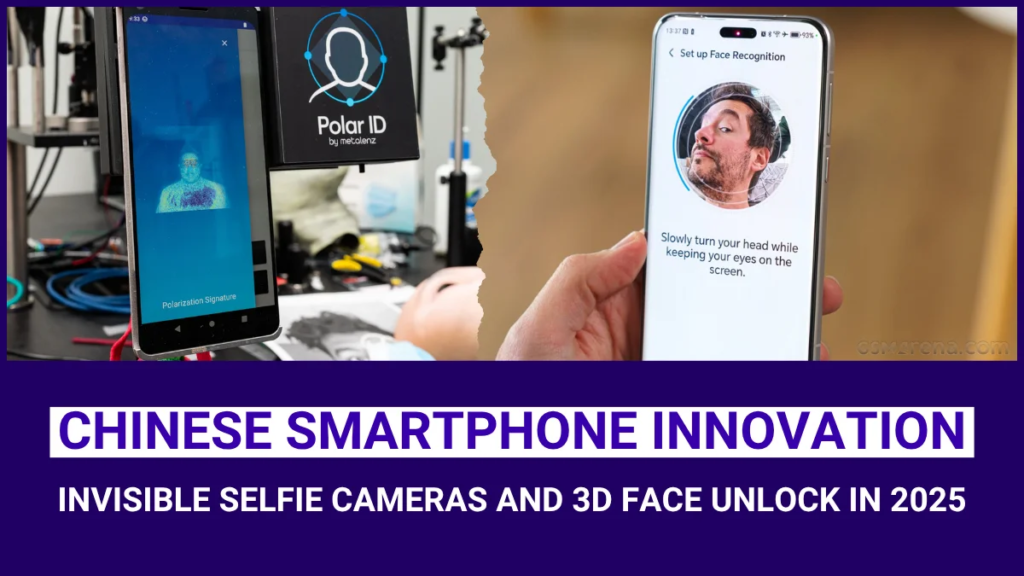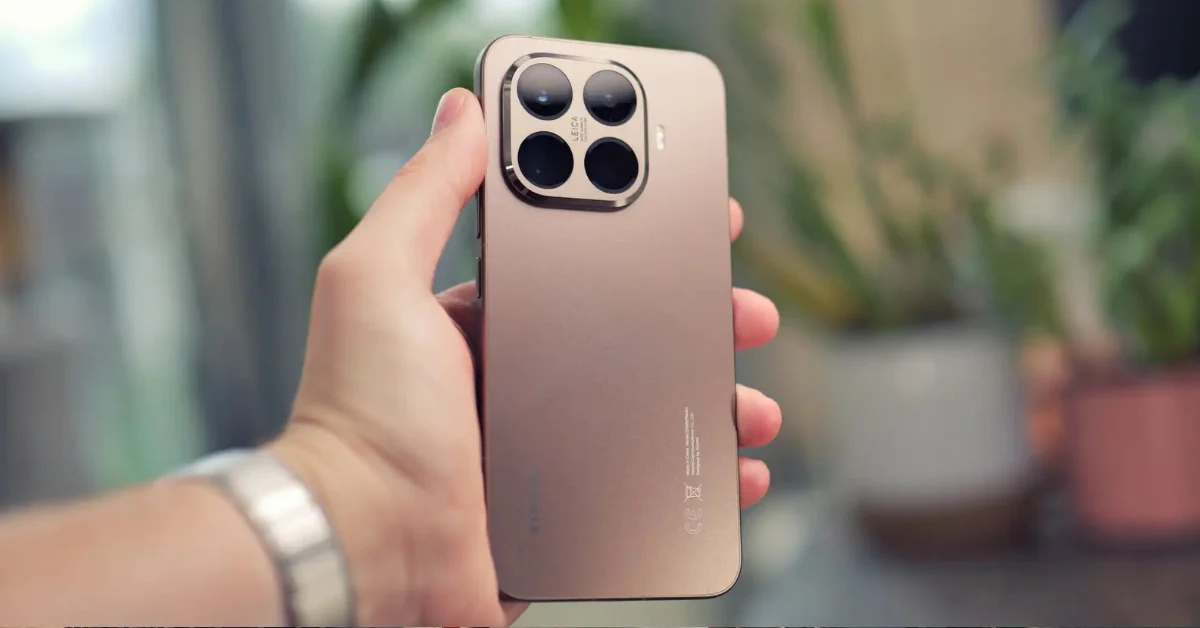
Chinese Smartphone Innovation: Invisible Selfie Cameras and 3D Face Unlock in 2025
- Zain Ul Abideen
- Reading Time 6

Chinese smartphone brands are working on exciting new technology that could change how we use our phones. They are testing under-display selfie cameras combined with 3D facial recognition, a feature not yet available in any phone. This could make Android devices more secure and stylish, competing with Apple’s famous Face ID.
What Are Under-Display Selfie Cameras?
Under-display selfie cameras (also called UD cameras) are hidden beneath a phone’s screen, so there’s no visible camera hole or notch. This gives phones a sleek, full-screen look. Brands like ZTE have already used this in phones like the ZTE Nubia Z70S Ultra, but the image quality isn’t as good as traditional selfie cameras yet.
Now, Chinese companies are trying to pair these hidden cameras with 3D face unlock technology. This could make phones both beautiful and secure without needing a visible camera.
Why 3D Facial Recognition Matters
3D facial recognition is a secure way to unlock phones or approve payments. It uses special sensors, like infrared and structured light, to map your face in 3D. Apple’s Face ID has been the leader in this for years, but only a few Android phones, like the Honor Magic 7 Pro, offer similar features. The Honor Magic 7 Pro has a 50-megapixel selfie camera and a 3D depth sensor in a small screen cutout, which works even in the dark.
Combining 3D face unlock with an under-display camera would be a big step forward. It could make Android phones more secure while keeping the screen clean and modern.
Which Chinese Brands Are Leading?
A report by tipster Digital Chat Station says several Chinese smartphone makers are testing this technology, but no specific brands or models were named. Based on trends, companies like Honor, ZTE, and possibly others like Xiaomi or OPPO could be involved. These brands are known for pushing new ideas in the smartphone market.
For example:
- Honor Magic 7 Pro and Magic 6 Pro already have 3D facial recognition.
- ZTE Nubia Z70S Ultra uses an under-display selfie camera but lacks 3D face scanning.
The race is on to be the first to combine both in one device.
Challenges of Combining These Technologies
Making under-display 3D facial recognition work is not easy. Here are the main challenges:
- Image Quality: Under-display cameras often produce blurry or low-quality photos because the screen blocks some light.
- Sensor Placement: 3D face scanning needs infrared sensors and structured light, which are hard to hide under a screen without affecting accuracy.
- Cost: Adding both features could make phones more expensive, which some users worry about, according to comments on social media.
Despite these hurdles, Chinese brands are known for solving tough tech problems quickly. If successful, this could set a new standard for Android smartphones.
Why This Matters for Smartphone Users
This new technology could make phones:
- More Secure: 3D facial recognition is harder to trick than 2D face unlock.
- Better Looking: No camera cutouts mean a smoother, full-screen display.
- Competitive: Android phones could match or even beat Apple’s Face ID.
It could also push other companies, like Samsung or Google, to adopt similar features, giving users more choices.
Comparison of Current Phones with Related Features
Phone Model | Under-Display Camera | 3D Facial Recognition | Key Features |
Honor Magic 7 Pro | No | Yes | 50MP selfie camera, works in dark |
ZTE Nubia Z70S Ultra | Yes | No | Hidden selfie camera, sleek design |
Apple iPhone (Face ID) | No | Yes | Industry-leading 3D face unlock |
What’s Next for Chinese Smartphones?
The Chinese smartphone market is known for fast innovation. If these tests succeed, we could see phones with invisible selfie cameras and 3D face unlock as early as late 2025 or 2026. This would give Android users a new level of style and security, possibly at a lower price than iPhones.
Posts on X show excitement about this trend, with some users calling it a “game-changer” for Android phones. Others are skeptical, worried about costs or if the tech will work well. Either way, this is a space to watch.
An under-display selfie camera is hidden under the phone’s screen, so there’s no visible hole or notch. It takes photos through the display but may have lower quality than traditional cameras.
3D facial recognition uses infrared sensors and structured light to create a 3D map of your face. It’s more secure than 2D face unlock and works in low light, like Apple’s Face ID.
A report mentions several Chinese brands are testing it, but names like Honor, ZTE, Xiaomi, or OPPO are likely candidates based on their history of innovation.
Possibly. Adding under-display cameras and 3D face unlock could raise costs, but Chinese brands often keep prices competitive compared to Apple or Samsung.
No official dates are confirmed, but successful tests could lead to releases in late 2025 or 2026, based on current trends.

Punjab Schools Reopen: New Schedule for August 2025 After Reduced Summer Vacation

Earthquake Today: 5.4 Magnitude Quake Jolts Pakistan, 8.8 Hits Russia

Tsunami Waves Hit Pacific Coasts After Massive Russia Earthquake

Mardan Board Result 2025: Punjab Private Schools Shine, Government Schools Improve














